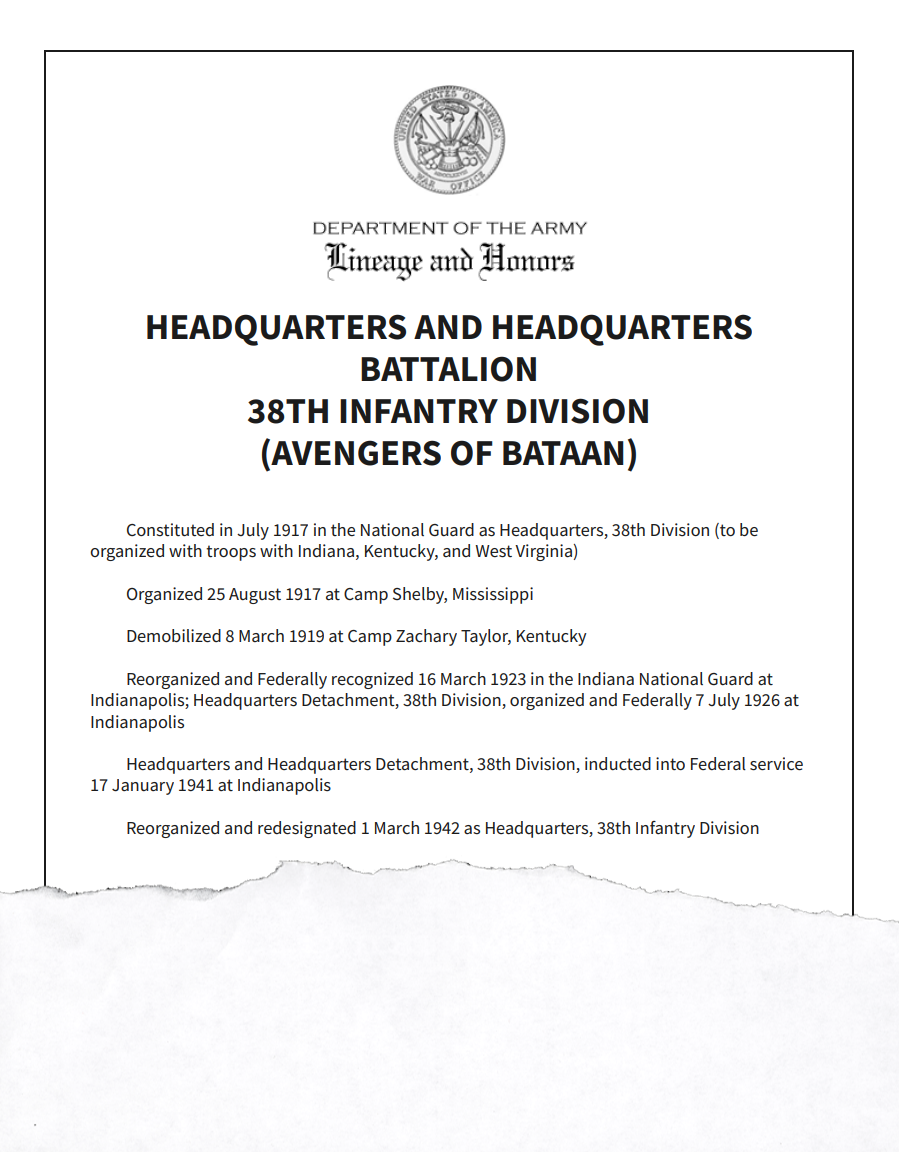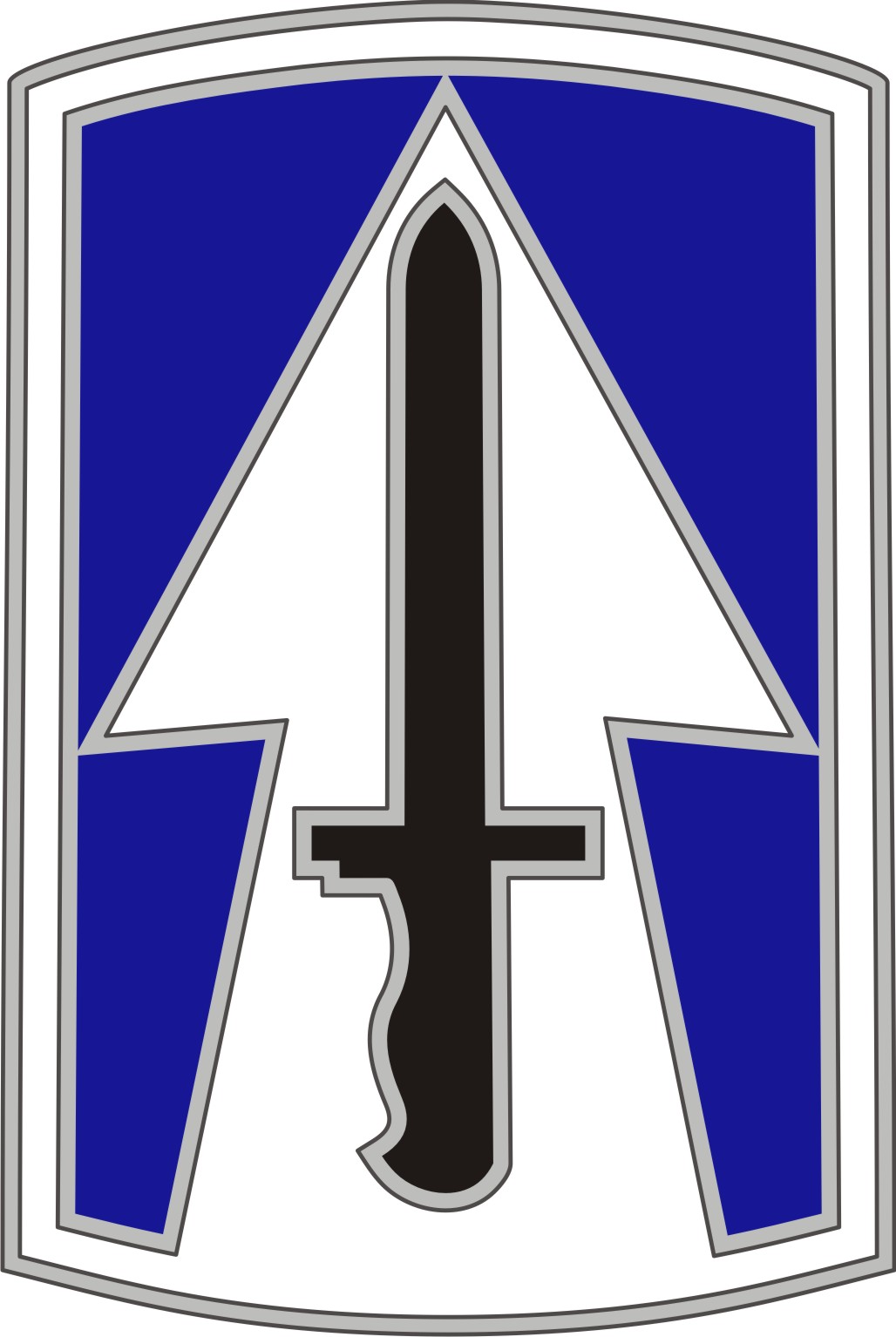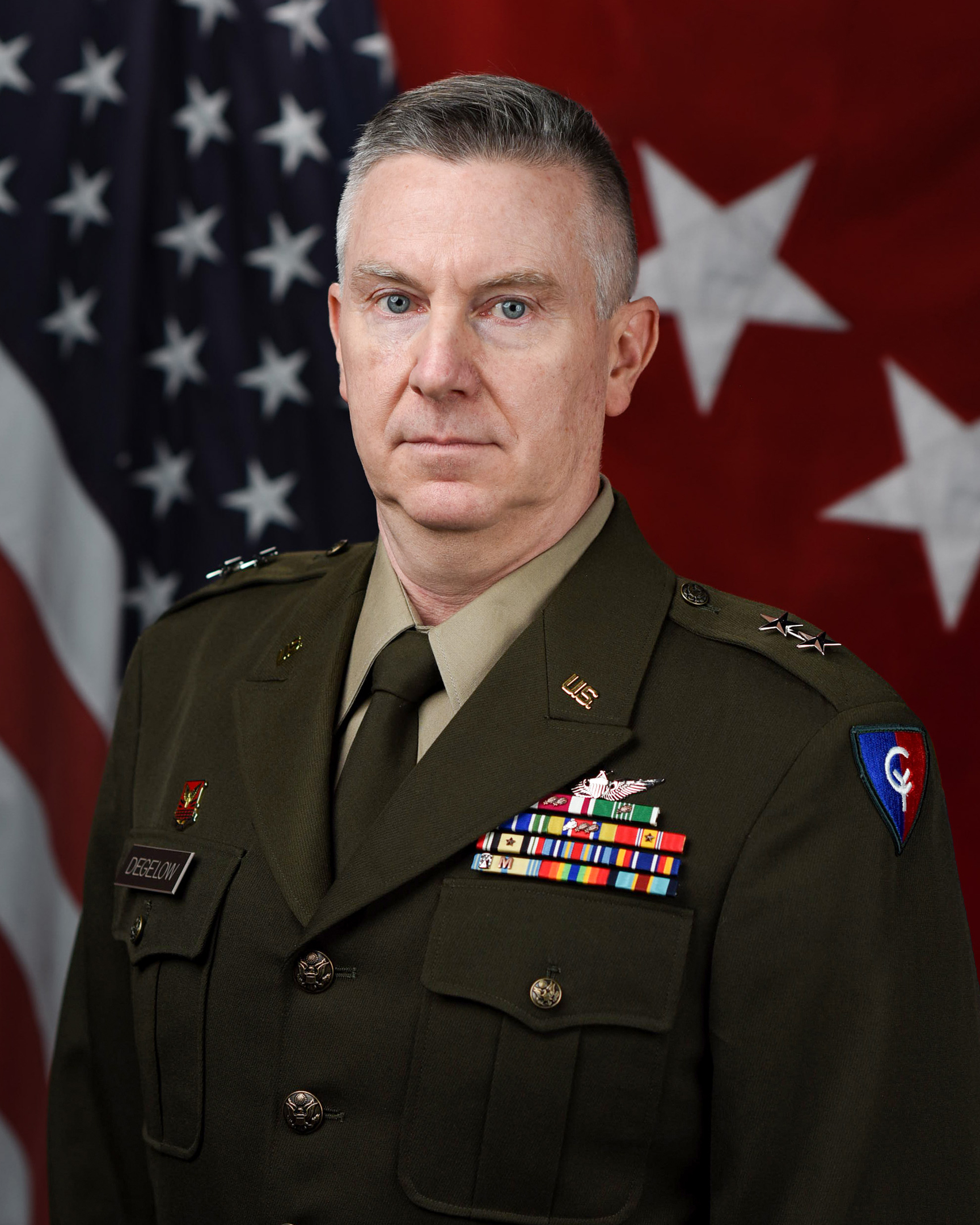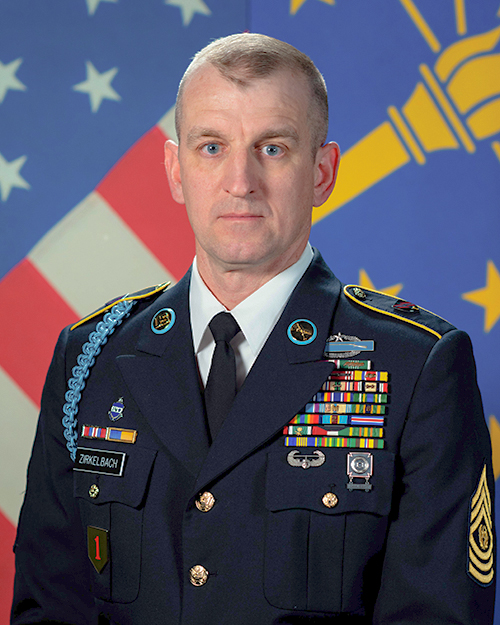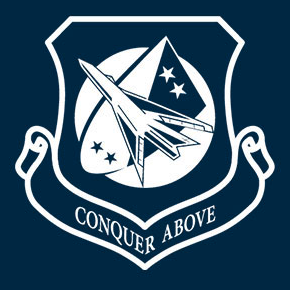INARNG HOME
MOBILIZATION VOLUNTEER PORTAL
SOLDIER FAMILY READINESS
IN YOUR COMMUNITY
ALUMNI RELATIONS
QUICK LINKS
Indiana has the privilege of being home to one of the eight Army National Guard divisions.
The 38th Infantry Division Headquarters is the Army's primary tactical-level warfighting headquarters, employing brigade combat teams, functional and multi-functional brigades and other Army forces in full spectrum operations across the spectrum of conflict to achieve military objectives. The 38th ID provides command and control over Army forces engaged in decisive and shaping operations, it identifies requirements and establishes priorities of support for Army forces conducting sustaining operations. We man, train and equip to defeat near peer adversaries and compete with regional adversaries below the threshold of war.
The division is deployable for state and national missions in multidomain operating environments. Through Title 32 of the United States Code, the governor of Indiana has authority to activate the division to respond to natural or manmade disasters or homeland defense missions within in the U.S. When called to active duty by the president of the United States, the division falls under Title 10 of the U.S. Code, which gives control to the federal government.

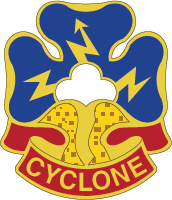
Active: 1917-1919; 1941 to present
Decorations: Philippine Presidential Unit Citation, Meritorious Unit Commendation
Unit Nickname: Cyclone, Avengers of Bataan
Home Station: Stout Field, Indianapolis
BLAZON: A blue three-leaf clover with gold stem and issuing out of a white stylized cloud at its center three gold lightning flashes pointing counterclockwise the central flash tipped with an arrow head; below the clover leaf, attached at each side, a red scroll inscribed in center with the word CYCLONE in gold letters. SYMBOLISM: The clover leaf is reminiscent of the original badge for non-color bearing units of the 38th Infantry Division. The lightning flashes represent the unit’s participation in three campaigns in the Pacific Theater of World War II (New Guinea, Leyte, Luzon) and an assault landing on Luzon is indicated by the arrowhead tip in the center flash. Further, the cloud and lightning flashes allude to the cyclone, a circular counterclockwise rotating storm from which the division takes its name. The colors blue, white and red refer to the Philippine Presidential Citation awarded to the unit for World War II service during the period October 17, 1944 to July 4, 1945.
Source: Department of the Army, The Institute of Heraldry
Headquarters and Headquarters Battalion (HHB)
- Headquarters Support Company (HSC)
- Detachment 1, Headquarters and Headquarters Company (HHC), Columbus, Ohio
- Detachment 3, 909th Field Feeding Team (FFT)
- Alpha Company
- Bravo Company (Intelligence and Sustainment)
- 38th Division Band, Stout Field, Joint Force Headquarters
Brigades
| 76th Infantry Brigade Combat Team | 38th Combat Aviation Brigade |
|
|
| 38th Sustainment Brigade | 219th Engineer Brigade |
 | 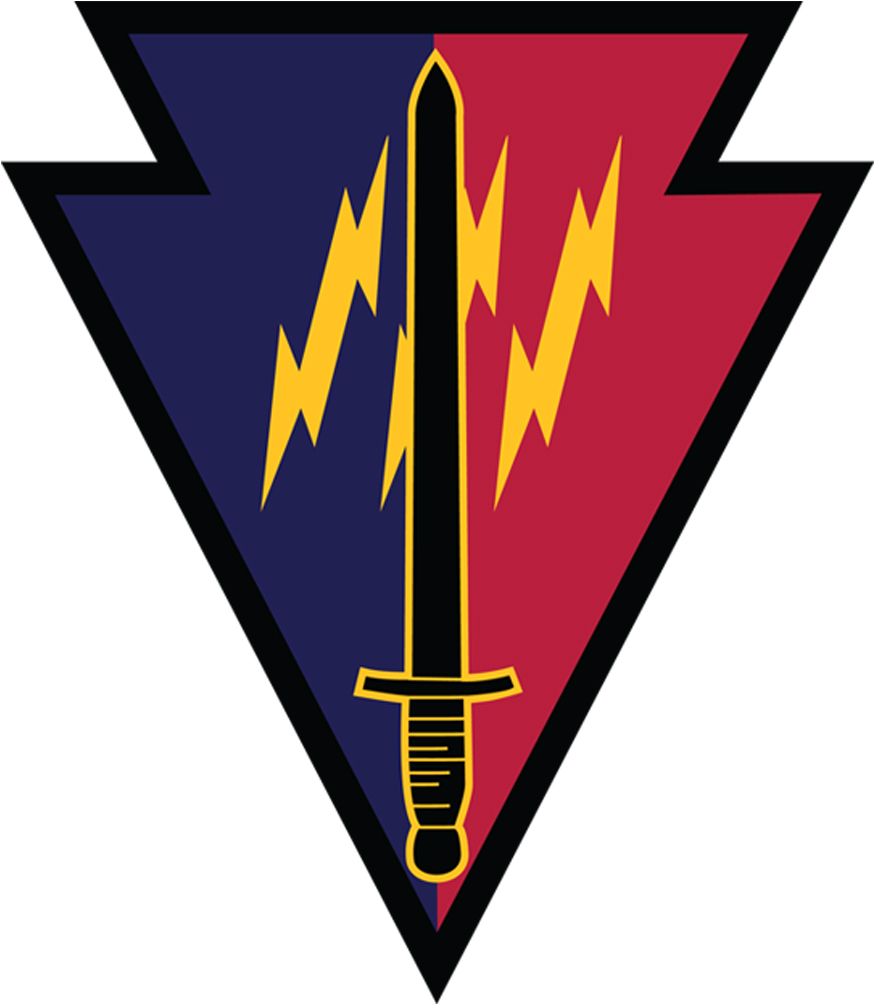 |
History
The 38th Infantry Division, headquartered in Indianapolis, has a rich history dating back to 1917 at Camp Shelby, Mississippi.
It was at Camp Shelby that the 38th ID earned its official nickname, “Cyclone Division.”
- World War I (1917-1919)
In April 1917, the United States declared war on Germany. As a result, Congress issued the Selective Service Act, which acted as a draft for National Guard units to be activated for federal service. The units from Indiana, as well as those from Kentucky and West Virginia, were sent to Camp Shelby, Mississippi to prepare for war, with Indiana providing the majority of the troops. It was at this time that the Army began to form standardized, structured divisions and a solid number method to keep track of them.
Upon the units’ arrival, Camp Shelby was just a large plot of uncleared land covered with pine stumps. After a few weeks and some hard work, it began to look like a military post, with a few wooden buildings, tents, clearly marked dirt roads and a capacity to hold approximately 36,000 troops. On Aug. 25, 1917, the 13th National Guard Division was officially named the 38th Division.
Disaster struck Camp Shelby on April 17, 1918. A tornado ripped through the camp, destroying the wooden buildings and tents and killing an Indiana soldier. The hastily built camp could not withstand the brutal winds of a cyclone. The incident earned the 38th Division its nickname, “The Cyclone Division.”
The newly formed Cyclone Division began shipping troops to France in September 1918, and by October, boots were on the ground. The 38th was approximately 1,900 troops short of wartime strength objectives of 40,000 troops.
In the spring of 1918, American Expeditionary Forces launched the Meuse-Argonne offensive. Because casualties were so high, the decision was made to begin sending smaller units and individual troops as replacements, creating skeleton divisions. The 38th was among the divisions to provide replacement troops to the front lines. By October 1918, the four infantry regiments, field artillery unit and engineers had all been pulled into other divisions to help fight. Less than a month later, on November 11, 1918, the war ended. After returning to the U.S. on March 8, 1919, the 38th Division was formally deactivated.
- World War II (1941-1944)
By the late 1940s, American involvement in World War II was becoming more of a reality each day. Army planners took a proactive approach and ordered troops into intensive training. The 38th Division was called into training, during which time Congress mobilized the entire National Guard for intensive training to better prepare them if their wartime service was needed.
Following a Presidential Execution Order to prepare for war, the 38th Division traveled back to Camp Shelby on Jan. 17, 1941. The troops arrived at Camp Shelby by early February. For some, the training reunited them with soldiers with whom they had served 20 years prior. Due to shortages in equipment and weapons, training was hampered several times. Soldiers resorted to using broomsticks and tree branches to simulate weapons. Right before the end of their training, lawmakers announced the Military Service Extension Act extending training for an additional six months for all National Guard soldiers.
On Dec. 7, 1941, the Empire of Japan bombed Pearl Harbor, plunging the U.S. directly into World War II. From late 1941 to 1943, the 38th Division trained, underwent a major reorganization and realignment, and boarded a water convoy headed to the combat zone. By Jan. 21, 1944, the entire division was on the Island of Oahu. Smaller units had moved forward ahead of the main body to supplement other American efforts in the war.
It was at this point that training for four months in the jungles of New Guinea, 38th Division soldiers had to learn to adjust to a different climate. The heat was intense, the water supply was poor, and soldiers had to adapt to a diet of Australian canned mutton. After three years of brutal fighting—more loss than victory—and the Bataan Death March, morale was low and soldiers were exhausted.
The U.S. changed its war strategy, developing a leapfrog approach to gain key pieces of land and take back footholds. In November 1944, the division was well trained and ready as it set off for Leyte Island in the Philippines as part of the leapfrogging plan. Though the commander of U.S. Army Forces in the Far East, Gen. Douglas MacArthur, was anticipating a quick victory, the battle at Leyte lasted longer than expected. The 38thDivision landed on Dec. 6, 1944, under enemy fire with the battle still raging.
The publications below provide a detailed account of the Leyte Island siege, the ensuing landing on Luzon, and the 38th Division’s victory at Zig Zag Pass:
- Moore, Zita. “World War II, Part I, The 38th Infantry Division in the Philippines.” Indiana Guardsman, Dec. 2010, pp 25-26. PDF Link
- Moore, Zita. “World War II, Part II, The 38th Infantry Division in the Philippines.” Indiana Guardsman, March 2011, pp 24-25. PDF Link
- Henry, William. “World War II, Part III, The 38th ID in the Philippines.” Indiana Guardsman, Dec. 2011, pp 24-25. PDF Link
- Willis, Gregory and Eugene M. Harding. “The 38th Infantry Division: The Promise Made Good to General MacArthur.” White paper submitted to the 2019 Indiana Association of Historians Program Committee, Feb. 2019. PDF Link
After 19 days of intense combat, the division had cleared Bataan. The 38th Division had the honor of accepting the formal surrender of two of the most powerful Japanese army groups in the Philippines. After successfully recapturing the Bataan Peninsula, General MacArthur is reputed to have dubbed the division’s soldiers “The Avengers of Bataan.” The nickname was proudly accepted and was displayed on banners, signs and even the unit’s “CY” shoulder sleeve insignia.
Post World War II (1947-1949)
Following World War II, the 38th Infantry Division was organized to have the entire division located within the state of Indiana. Headquarters 38th Infantry Division was organized in Indianapolis on March 5, 1947, and the division was fully formed in 1949. During the reorganization of the 38th ID, the 152nd Infantry Regiment was redesignated as the new Indiana 293rd Infantry Regiment.
- Reorganizations
- In 1920, the 38th Division reorganized and was comprised of the same three states: Indiana, Kentucky and West Virginia. On March 16, 1923, a newly organized 38th Division established its headquarters at Indianapolis.
- In 1959, the 38th ID went through another change to a pentomic division, consisting of five major subordinate commands, or battle groups, in lieu of the former three infantry regiments. During the 1960s, the division was put on alert for possible mobilization for conflicts involving the Soviet Union and Berlin, and to respond to the Cuban Missile Crisis.
- In March 1963, the 38th ID in Indiana reorganized into a division with three brigade headquarters and eight maneuver battalions, six infantry and two armored. Each brigade was a headquarters only. Any maneuver battalion could be attached, detached or reattached to any brigade headquarters as the mission dictated. A new cavalry squadron also augmented the maneuver force, aviation assets were expanded, the field artillery was realigned and a new support command for combat service support was created.
- In November 1965, the last major reorganization of the all-Indiana division ushered in a Defense Department-directed period known as the Selective Reserve Force/Reinforcing Reserve era. Within the 38th Infantry Division, one infantry battalion became an airborne infantry battalion and another became a mechanized infantry battalion. Over half of the division units were selected as high priority units to be mobilized at a designated station with other high priority units from other states to form a full high priority division. The remainder of the 38th ID was designated as low priority reinforcing reserve units with minimum strength and equipment.
- A major internal reorganization occurred in September 1993, when the division support command was completely realigned. The traditional supply and transport, medical and maintenance battalions were reorganized into one main and three forward support battalions. Shortly after in 1994, the 76th Infantry Brigade started a two-year program of phased reorganizing and realignment actions to be unassigned from the 38th.
- 1964-2005
Disaster Relief (1964-1967)
During the period from 1964 to 1967, the Indiana National Guard was called upon several times during severe winter conditions to provide assistance and relief for Indiana citizens. In 1965, devastating tornados ripped through central and northern Indiana on Palm Sunday. Division units that were ordered to duty to provide critical disaster relief were the only state entities capable of mounting such a concentrated effort.
Gulf War (1990-1991)
The United States began Operation Desert Shield in the Middle East on Aug. 7, 1990, to free the nation of Kuwait from a military takeover by Iraq. Operation Desert Storm and the air war phase began Jan. 17, 1991. The 38th Infantry Division was not mobilized as a division for this effort; however, a large number of individual soldiers, mostly field artillery and infantry, were asked to serve or volunteered to serve with other mobilized units.
Summer Olympics (1996)
More than 7,000 38th ID soldiers participated in 15 battalion-sized task forces, plus two aviation task forces, to help provide security support to the 1996 Olympic Games in Atlanta, Georgia.
Joint Readiness Training Center Deployment (2000)
In the largest movement of military equipment by river barge since World War II, in 2000, the 38th ID Support Command deployed to JRTC to provide a logistical support area for the 76th Infantry Brigade in the field. An additional significant portion of the 38th ID provided personnel and equipment to a joint state task force.
Bosnia and Herzegovina (1998, 2004)
In 1998, the 38th ID deployed Battery E, Target Acquisition of the 139th Field Artillery to Bosnia in support of peacekeeping operations in the war-torn former Yugoslavia. At Eagle Base on April 1, 2004, the 38th ID became the 15th and final rotation of American peacekeepers in Bosnia, taking transfer of authority for Task Force Eagle, known as Stabilization Force Rotation 15. Also in 2004, the division took transfer of authority for Kosovo Force Rotation 6A and also provided troops as part of the NATO contingent for both missions known as the Composite Support Elements in Sarajevo and Pristina, respectively.
Hurricane Katrina and Hurricane Rita Relief Operations (2005)
Units of the 38th ID were mobilized in 2005 in support of hurricane relief efforts in the wake of Hurricanes Katrina and Rita, primarily in the states of Mississippi and Louisiana.
- War on Terrorism
The Indiana National Guard has been continuously involved in operations in support of the War on Terrorism since Sept. 11, 2001. Since 9/11 to today, division soldiers continue to deploy in support of operations in southwest Asia and the Middle East, including Operation Iraqi Freedom, Operation Enduring Freedom and Operation Freedom’s Sentinel.
On Oct. 7, 2001, in response to the September 11 attacks, the U.S. began airstrikes in Afghanistan targeting Al Qaeda and the Taliban known as Operation Enduring Freedom. The military immediately began sending out notices of sourcing to inform brigades of their upcoming involvement in the war, and the first call came for two battalions out of the 76th Separate Infantry Brigade. The 38th ID contributed greatly to proper readiness levels for deployment, cross-leveling soldiers and equipment to the 76th Infantry and the 219th Area Support Group.
In the largest deployment of Indiana National Guard soldiers since WWII, 38th ID soldiers and units were used to round out the 76th Brigade Combat Team to deploy 3,400 soldiers in support of Operation Iraqi Freedom.
In April 2004, additional elements from the 76th IBCT were ordered into Afghanistan, as the war continued more and more soldiers of the 38th ID were notified that they would be joining their brothers and sisters in combat.
By 2009, 38th Infantry Division headquarters received a notice of sourcing to deploy a command and control element to Afghanistan. Task Force Cyclone became responsible for counter-insurgency operations and for being the main control point for five additional forward operating bases. By the time they returned to the United States in July 2010, Task Force Cyclone had helped with the construction of four new bases and the restoration of seven camps.
- Modern Operations
Warfighter (2015)
In February 2015, more than 150 38th ID soldiers participated in a division-level warfighter exercise at Camp Atterbury, training alongside more than 3,500 service members from 22 different units from the Army and Air National Guard, Army Reserve, active-duty Army and Air Force and Canadian Forces. Concentrating on processes and procedures to improve information flow between higher commands, subordinate units, multinational forces and other government agencies, the nine-day exercise tested their joint and combined command and control techniques in simulated battle scenarios.
Vibrant Response (2015)
In April 2015, 38th ID troops took on a disaster-response mission to support civilian authorities. The standby, follow-on mission supported U.S. Northern Command. The Cyclone Division command staff coordinated missions for more than 2,000 personnel highlighting their command and control capabilities during the exercise, which simulated a nuclear detonation in a major U.S. city.
Deployments (2015-2016)
Real-world missions for 38th ID soldiers included two deployments to Guantanamo Bay, Cuba and deployments to Kosovo and Afghanistan. Approximately 120 38th ID troops deployed to Cuba in November 2015 and August 2016. They supported Southern Command by providing command and control assets that oversaw the safe, secure, humane, legal and transparent care and custody at the base’s detentions facilities, working at a joint base alongside sailors, airmen and Marines. The 38th Combat Aviation Brigade (CAB) deployed approximately 100 soldiers in September 2016 to Kosovo in support of the NATO-led mission there to assist with the international humanitarian effort. In January 2017, Cyclone Division deployed 60 soldiers to Afghanistan in support of Operation Freedom’s Sentinel. While in the Middle East, the Guardsmen trained, advised and assisted Afghan security forces in two provinces.
Operation Saber Junction (2017)
In April 2017, 38th ID soldiers supported the U.S. Army Europe’s Operation Saber Junction in Germany. While there, they acted as the higher command during the certification exercise to evaluate the readiness of combat brigades to conduct unified land operations, a simultaneous combination of offensive, defensive and stability missions. The joint and combined exercise featured the U.S. Army, U.S. Air Force and forces from Romania, Poland and Slovakia. Guard and Reserve forces that supported U.S. Army Europe played a vital role in boosting land-force capability, and their integration represented one of the five pillars of a strong Europe.
Joint Readiness Training Center Deployment (2017)
More than 3,500 76th Infantry Brigade Combat Team soldiers completed nearly a month-long rotation at the Joint Readiness Training Center at Fort Polk, Louisiana focusing on mission command training to prepare for combat deployment around the globe. In addition to the infantry brigade, division soldiers with the headquarters battalion and sustainment brigade assisted with or took part in the rotation.
Hurricane Harvey and Irma Relief Operations (2017)
In August and September 2017, approximately 80 soldiers from the 38th ID responded to relief efforts for Hurricane Harvey in Texas and Hurricane Irma in Florida. In Texas, Cyclone Guardsmen managed in-processing operations near Bastrop, Bryan and Huntsville, deploying a mobile command post to provide movement control and reception, staging, onward movement and integration for deploying units, and replacing Texas Guardsmen so they could focus on their personal recovery efforts. For Hurricane Irma relief efforts, approximately 100 Cyclone Guardsmen provided command, control and coordination oversight.
Pacific Pathways (2018)
As the main task force for the Army’s Pacific Pathways exercises in 2018, the 76th IBCT became the first National Guard Brigade to lead a major U.S. Army exercise in the Pacific. The Brigade led the second leg of the yearlong exercise developed by the U.S. Indo-Pacific Command (USINDOPACOM) and U.S. Army Pacific (USARPAC). The unit’s participation in Pacific Pathways addressed important challenges for the military, including the sustained and expeditionary utilization of part-time service members and the coordination and logistics necessary to move troops, equipment and supplies into the theater from the heart of the continental United States.
Task Force Spartan (2019-2020)
More than 600 National Guardsmen with the 38th Infantry Division deployed to the Middle East in July, 2019, for a year-long deployment at Camp Arifjan, Kuwait. The Division assumed authority of U.S. Army Central Command's Task Force Spartan, charged with the care of more than 10,000 U.S. service members in the Gulf region. Their mission, which involved partnering with host nations and partnered militaries, allowed soldiers to perform side by side and use their training to build interoperability.
Covid-19 Domestic Operations (2020-2021)
Facing dual problems of a worldwide pandemic and civil unrest in 2020-2021, the Cyclone Division faced some of its biggest challenges. The Division activated more than 2,500 soldiers from across the state to support critical operations and civil authorities. Soldiers worked at food banks, prisons, hospitals and long-term care facilities, and facilitated logistical coordination and distribution of the coronavirus vaccine, playing a vital role in Indiana’s statewide response.
NATO Mission in Kosovo (2022)
In Oct. 2022, approximately 300 Indiana National Guardsmen with the 38th Infantry Division’s 76th Infantry Brigade Combat Team deployed to Kosovo as Task Force Nighthawk to assume the Regional Command-East mission for KFOR 31 in support of Operation Joint Guardian. KFOR RC-East comprised 10 contributing NATO partner nations, including Poland, Latvia, Switzerland, Turkey, Slovenia, Greece, Hungary, and Italy. Its mission was to maintain a safe and secure environment and freedom of movement for all communities in Kosovo, as mandated by the United Nations Security Council Resolution 1244 of 1999.
Warfighter 24-4 (2024)
The 38th ID prepared for battlefield scenarios during June, 2024’s Warfighter Exercise at Camp Atterbury. During the nine-day exercise they tested their proficiencies; refined their tactics, techniques and procedures; and synchronized their assessments, decisions and actions to defeat the enemy. More than 2,000 troops from Indiana and surrounding states contributed by acting as response cells or as other units, helping sustain the troops with fuel, water and food.
- Sources and Further Reading
38th Infantry Division, Avengers of Bataan: 38th Infantry Division, Historical Report. Military Bookshop Sept. 1, 2011.
Avramovic, Ivana. “Indiana National Guard takes charge of Eagle Base.” Stars and Stripes, April 2, 2004.
Center for Military History. Pictorial Record-The War Against Japan., Washington DC: U.S. Government Printing Office, 1952.
Center for Military History. Reader’s Guide: United States Army in World War II. Washington DC: Government Printing Office, 1992.
Center for Military History. The Campaigns of World War II. Washington DC: Government Printing Office, 1954.
Chase, William. Front Line General-The Command of William C. Chase: An Autobiography. Houston: Gulf Publishing Company, 1975.
Deleon, Joseph and Floyd G. Deleon, The Long Road to Bataan and Beyond. Bloomington IN: Author House, 2005.
Doubler, Michael. Civilian in Peace, Soldier in War: The Army National Guard, 1636-2000. Kansas: University of Kansas Press, 2003.
Dupuy, Ernest R., The National Guard: A Compact History. New York: Hawthorne Publishing, 1971.
Indiana Historical Society. “The Avengers of Bataan,” Traces of Indiana History and Midwestern History, (Spring 2002): 4-14.
Greene, James F. “Our Army Divisions,” Trading Post, Jul.-Sept. 1978, pp. 45-46.
Limneos, Samuel. “Eyewitness to Transformation,” Army History, no. 87 (Spring 2013): 7-27.
Morton, Louis. The War in the Pacific-The Fall of the Philippines. Washington DC: U.S. Government Printing Office, 1953.
Prefer, Nathan N. “Leyte, 1944: The Soldiers’ Battle,” Casemate, Dec. 7, 2012.
Romanus, Thomas, and Riley Sutherland. The China-Burma-India Theater: Stillwell’s Command Problems. Washington DC: Government Printing Office, 1956.
Smith, Robert Ross. The War in the Pacific-The Approach to the Philippines. Washington DC: U.S. Government Printing Office, 1963.
Smith, Robert Ross. The War in the Pacific-Triumph the Philippines. Washington DC: U.S. Government Printing Office, 1953.
Watt, William J., and James R. H. Spears. Indiana’s Citizen Soldiers: The Militia and National Guard in Indiana History. Indiana: Indiana State Armory Board, 1980.
Watt, William J. “The Indiana State Guard,” The Indiana Military History Journal, (Jan. 1976): 43-47.
Weigley, Russell. History of the United States Army. New York: MacMillan Publishing, 1967.
______________. The American Way of War. New York: MacMillan Publishing, 1973.

